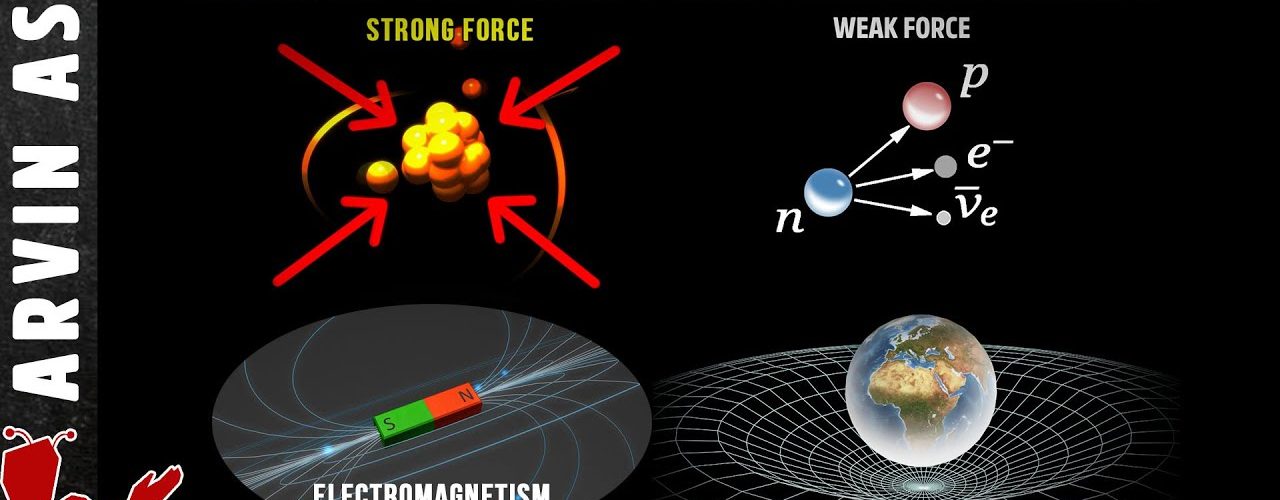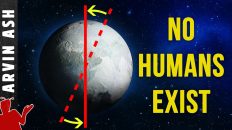How the 4 fundamental forces of nature actually work. The mechanism of the 4 fundamental forces (Why is entropy of a black hole so high)
The best theory in physics today tells us there are 4 known fundamental forces or interactions of nature that control every action in the universe you can think of – everything from the sun shining, to your brain activity, to water evaporating, to planets rotating – every process, every chemical reaction, every movement, every thought.
In a previous video, we looked at the function and origin of the 4 fundamental forces and showed how they are believed to have come from a common origin.
But we were also left with several questions.
How exactly does a force between particles work? What is the underlying mechanism? What causes an attraction or repulsion? And, why does electromagnetism and gravity have infinite range, but the strong and weak force have such a small range?
So far, there are thought to be just 4 fundamental forces, or more precisely interactions in nature. Gravity which keeps you on the surface earth, and keeps the earth orbiting the sun. Electromagnetism which is the essence of light waves, and is also the force responsible for all chemistry. The strong force which binds the protons and neutrons in the nucleus of atoms together, and the weak force with is responsible for some kinds of radiation.
So how to these forces work?
First, all forces, with the possible exception of gravity are mediated by force carrying particles called gauge bosons. Gravity is also theorized to be mediated by a particle. It’s carrier particle would be called the graviton.
All four forces operate by way of the same basic mechanism: the exchange of virtual particles, usually the gauge bosons of the standard model. These gauge bosons are photons that carry the electromagnetic interaction, gluons the are responsible for the strong force, and the W and Z bosons for the weak force. The graviton would be the boson responsible for gravity.
Real versions of these gauge bosons have been observed with the exception of the graviton.
Since there is no quantum theory of gravity yet, let’s first look at the other three forces that do have a quantum theory to support them.
First, what is a virtual particle? These are particles that exist due to the Heisenberg uncertainty principle.
One version of the uncertainty principle states that the change in energy times the time of a particle’s existence must be equal to Planck’s constant over 4pi. Where Planck’s constant is 6.6X10^-34 Joules seconds. delta E * delta T >= h/4pi
But the probability laws of quantum mechanics are such that virtual particles, not real particles, can exist, if their energy times time is LESS than h/4pi. This essentially means that nature allows fleeting particles to exist as long as its for a really short time. And since energy and mass are equivalent, nature creates particles with mass by borrowing energy from the vacuum, but for a really short time so that it gets destroyed before it can be detected. They are really just excitations of the underlying quantum fields, but appear only as forces, not as detectable particles.
You might say, come on, how do you know it’s there if you can’t detect it. Well we can’t detect individual virtual particles, but we can detect the effect of many particles being created and destroyed. One such effect is called the Casimir effect where a physical force between two closely held plates is created because the pressure of virtual particles outside the plates is higher than the pressure between the plates.
So now if you buy that, the next question is how does an exchange of these virtual particles result in a force? There are two ways to look at this.
Let’s use electromagnetism as the example. When two magnets attract or repel each other, it is due to an exchange of virtual photons.
Here is the simplest analogy.
Imagine two people on a boat throwing basketballs at each other. As the two throw the balls away from each other, there is a transfer of momentum that occurs. This momentum transfer moves the boats apart. The more this happens, the further apart they go.
This is analogous to the way that photons transfer momentum from one charged particle to another, resulting in a repulsion of like charges. The only difference is that the photons are virtual photons.
Now, you might say, ok, I can understand this, but how does this exchange of particles result in an attractive force. Well, It happens through the exchange of negative momentum. This can only be approximated in our boat example, but here is a simplified way to visualize it.
Imagine the same two boaters, but this time instead of holding a basketball in their hands, they are holding a boomerang. And instead of facing each other, they are facing away from each other. When one person throws the Boomerang, it circles back in such a way that the other person catches it facing the opposite direction.
This also results in an exchange of momentum, but this time such that the boats pull closer together. This is roughly analogous to the way an exchange of negative momentum can occur between two dissimilarly charged particles.
Now, let me explain in a less intuitive way, but one that is probably more accurate. We will use the same example of electromagnetism and exchange of virtual photons.
When two similar charges are near each other, quantum theory shows that the exchange of virtual particles create an energy gradient between the two particles such that there is a higher energy state between the charged particles. Since particles want to be exist at their lowest energy state, they move apart.
The opposite happens when dissimilar charges are near each other. A lower energy state is created between the two particles, so the charges move closer together to be at a lower energy.
Now the question is why does electromagnetism have an infinite range? This is directly due to the fact that photons have zero mass. If we take the same uncertainty equation we saw earlier and substitute MC squared gamma instead of E, from Einstein’s famous equation E equals MC squared gamma, where gamma is:
And since distance is C times time, if you do the math, you find that distance has the following value. D = h/4 pi M C gamma – This means that the higher the virtual rest mass of the particle the shorter the distance that it can travel. Range is limited by its mass. Since photons have no rest mass, they can theoretically travel and infinite distance before being absorbed by another charged particle.
But this presents a conundrum when it comes to the strong force, because it’s mediating virtual particle, the Gluon is also massless, but the strong force has a very limited range, to only the width of a proton. So what gives? Why doesn’t it also have infinite range?
The answer involves quantum chromodynamics or QCD. Here’s the simplified version.
First understand that protons and neutrons are made of three quarks each. Gluons are responsible for binding the three quarks together. So it is the reason protons and neutrons exist.
The main difference between photons and gluons is that photons are electrically neutral so they do not interact with themselves. They only interact with the charged particles when mediating the electromagnetic force.
Gluons on the other hand carry a charge so that they end up interacting with each other in addition to interacting with quarks. This limits their range because they form a kind of link or rubber band with not only the quarks, but also with themselves.
Now here is the shocker. These gluons are electrically neutral. They do not have a positive or negative charge like protons and electrons. They have a completely different kind of charge called a color charge. Wow! What is a color charge? It has nothing do with colors that you and I can see with our eyes. It is just a metaphor to describe a new kind of property of certain particles.
Physicists kind of understand how color charges work, but to be honest no one really knows what a color charge actually is. In fact, no one know what a positive or negative electrical charge is either. We know how it works, but what it actually is, is not known.
It is just a property that some particles have. But the important thing to remember is that the color charge carried by gluons is not the same as electrical charge.
There are three kinds of color charges, Red, green and blue. The way to think of this is that red, green, and blue combine make a neutral white. So just like electrical charges are conserved or balanced – positive with negative.
Color charges also have to be balanced by either a combination of the three colors to make a neutral white, or by color-anticolor pairs. Like red and anti red, or green and anti green which combined, become neutral.
These color charges are also a property of quarks that make up protons and neutrons. And that’s why gluons interact with them, and bind them together. Only particles with color charge are affected by the strong force.
There is an important distinction between the way the strong force works with color charges vs. the way electromagnetism works. electromagnetism and gravity get weaker as objects get farther apart. The force between two quarks, however, actually gets stronger as they get further apart.
It works like a rubber band. If you try to pull two quarks apart the force between them gets very strong. When they are close together, the force is weak. This tends to pull a quarks back into the proton or neutron. However, if you knock a quark very far away from the neutron or proton, the energy becomes so large that the rubber band-like force created by gluons breaks.
And the energy released creates a new quark/ani-quark pair, and one quark is pulled back into the proton. The newly created quark-anti quark pair is called a meson. And these are the residual particles that actually mediate the velcro-like force that keeps protons and Neutrons tied together in the nucleus.
The gluons are involved only indirectly in the process of creating the mesons. And since mesons do have mass, if you do the math, the range of the force keeping neutrons and protons glued together is very short, about the diameter of a proton. You have just gotten a quick intro to quantum chromodynamics – or QCD.
That’s the strong force. Now, how does the weak force work? It is a stretch to call this a force, it is more like a power that certain particles have to turn themselves into different particles. An example of this is when a neutron turns into a proton, by emitting an electron and antineutrino.
What is the mechanism? A neutron is composed of two down quarks and one up quark. A proton is composed of two up quarks and one down quark. Any neutron can turn into a proton by converting one of its down quarks to an up quark.
It does this by emitting a negatively charged W boson. This turns the down quark into an up quark, changing the particle from a neutron to a proton. Since the W minus boson carries a negative charge, the Neutron which had no charge, now becomes a proton with a positive plus 1 charge to balance charges.
Charge is always conserved in the universe. The W boson then almost immediately decays to an electron and antineutrino. So what is detected in the decay of Neutrons to protons is an electron and an antineutrino. The antineutrino acts to balance out the momentum in this exchange.
The reason this interaction has a very short range is because the W boson is quite massive. Consequently, the W boson just doesn’t survive for very long. If you do the math using our uncertainty equation, the range turns out to be only about 10^-18 meters which is about 1/1000 the diameter of a proton.
This kind of decay is rather rare in quantum mechanical terms. A lone Neutron takes almost 15 minutes to decay into a proton. This is an eternity in the tiny world of quantum mechanics.
The interesting thing about the weak interaction is that its strength a range of 1/1000th the diameter of a proton is almost the same as that of electromagnetism. And it was this insight that led to the unification of electromagnetism with the weak force – the electroweak theory. I will have dedicated video on this theory in a future video.
I will have dedicated video on this theory in a future video.
How does all this apply to gravity? Well, since it has infinite range, its theoretical carrier particle the Graviton should also have no mass.
The reason we don’t have a quantum gravity theory is because at quantum scales, It is completely overwhelmed by the other three forces. It would be figuring out the weight of a dust particle on your skin while weighing yourself on a scale. So for now gravity is treated almost purely in geometrical terms using general relativity.
But like I said in the previous video, at some fundamental level, all 4 forces should all be one and the same. Figuring out this unification is the holy grail of physics, and would lead us to a theory of everything.
Will be ever discover it? I think we absolutely will. It is just a matter of time.
Stephen Hawking said the theory of everything would be the ultimate triumph of human reason, for then we would truly know the mind of God.
I happen to think that the theory of everything would not be the end of our pursuit, but in many ways it’s beginning. How the theory results in the complexity of the universe, life on earth, the organization of our brain, and a myriad of other mysteries would still need to be figured out. But at least with a theory of everything instead of poking a stick at a dark world like a blind person, we would see the universe in all its glorious colors. And at least we would then know the ground rules of the universe.







